Inverness
Although it is the most northerly of Scotland’s ‘cities’ Inverness isn’t hard to reach. With the four major roads which span the Scottish Highlands converging on the city, its own airport and a railway station and bus station, both of which are travel hubs for the east coast of Scotland, Inverness is well located as a great starting (or finishing) point for any trip to the Highlands.
But the city shouldn’t be regarded as a mere waypoint on a greater journey. It has much to offer those who may wish to linger awhile and explore what Inverness and the surrounding area has to offer. There is a great selection of hotels, B&Bs and guest houses both within the city and nearby so finding suitable accommodation shouldn’t be a problem.
River Ness
The River Ness runs through the middle of the city and the numerous hotels and cafes on its banks and the attractive bridges across the river give both wonderful views and the opportunity for visitors to simply sit and people watch as the world goes by as well as sample what culinary delights the city has to offer.
Inverness is the cultural heart of the Highlands with museums and art galleries dedicated to local history and culture. Various guided tours of the city are available pointing out places of interest and giving an insight into the history of the area – fairies, slaves and rebellion feature large!
Victorian Market
For dedicated shoppers Inverness has a Victorian Market and a large, modern shopping centre as well as numerous small shops selling all kinds of items from souvenirs to kilts and other tartan clothing. If you search diligently you may even be able to purchase a haggis!
Inverness is also associated with that iconic piece of clothing, said to have been worn by Sherlock Holmes – the Inverness Cape. This is a sleeveless coat, with an over cape. Many bands, including pipe bands and those with accordion players use the Inverness Cape as part of their uniform, as it gives good access to their musical instruments, unlike coats with sleeves that can be restrictive. Coachmen, who drove horses and carriages, also used to be clothed in an Inverness Cape for the freedom it provided to control and handle the horses.
 Inverness Cathedral
Inverness Cathedral
Inverness Cathedral, dedicated to St Andrew, has an important place in Scottish religious history and is currently the seat of the Primus of the Scottish Episcopal Church. It is a magnificent building and well worth a visit. Inverness Castle is a wonderful sight from across the river towering, as it does, over the city and the river and is another place not to be missed.
Caledonian Canal
For those of a nautical bent Inverness lies at one end of the Caledonian Canal, that 60-mile-long diagonal slash through Scotland which offers an interesting opportunity to sail peacefully from one side of Scotland to the other. Several companies hire motor cruisers on the canal and it is possible to cruise from Inverness to Fort William passing through some magnificent scenery along the way. As you traverse Loch Ness, look out for the Loch Ness monster!
Dolphins Cetaceans and Porpoises
Dolphin watching trips out in the Moray Firth can be taken where a resident pod of bottlenose dolphins can often be seen frolicking in the waves. Other cetaceans can also be spotted including harbour porpoises and even, occasionally, minke whales. If your sea legs aren’t the best then stay on shore and go to Chanonry Point – the best of several places on the Moray Firth from where these creatures can be seen.
NC500
The city is also the starting point for the NC500, that 500-mile long road trip which takes you up the east coast, along the north coast and down the west coast of Scotland returning to Inverness by a cross-country route cutting through some magnificent scenery on its way.
Only a couple of miles from Inverness you may be interested in visiting what is one of Scotland’s most iconic historical sites.  The Battle of Culloden in 1746 was the last pitched battle fought on British soil and resulted in the defeat by an English army of the rebellious Jacobite forces under the command of ‘Bonnie Prince Charlie’. The site of the battle is preserved as much as possible with a visitors’ centre including a 360-degree theatre which puts you right in the middle of the battle and a museum which displays artifacts which have been recovered from the battlefield.
The Battle of Culloden in 1746 was the last pitched battle fought on British soil and resulted in the defeat by an English army of the rebellious Jacobite forces under the command of ‘Bonnie Prince Charlie’. The site of the battle is preserved as much as possible with a visitors’ centre including a 360-degree theatre which puts you right in the middle of the battle and a museum which displays artifacts which have been recovered from the battlefield.
Inverness Castle
Inverness also has a castle, which acted as a place of corrections for many years, after being rebuilt in the nineteenth century on what was originally a defensive site, overlooking the River Ness. Inverness castle is no longer the site of the Sheriff court but the grounds and North Tower are open to visitors, with a wide view of the River Ness and many historical artifacts. When acting as a defensive site, it was associated with Mary Queen of Scots, though was later blown up by Bonnie Prince Charlie, as it was taken over by a clan who supported the English forces.
No matter what you decide Inverness will make you welcome. By the way, Inverness is said to be the place in the British Isles where the clearest English is spoken!
More On Inverness
THINGS TO DO AND MAPS Of Inverness














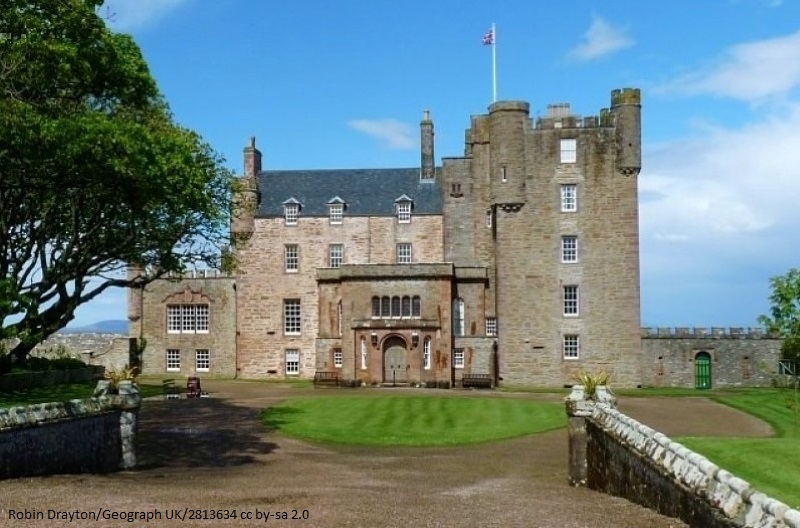





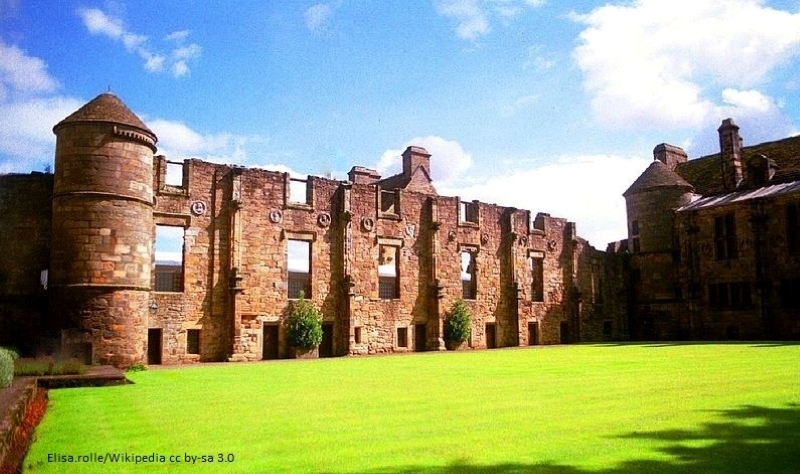

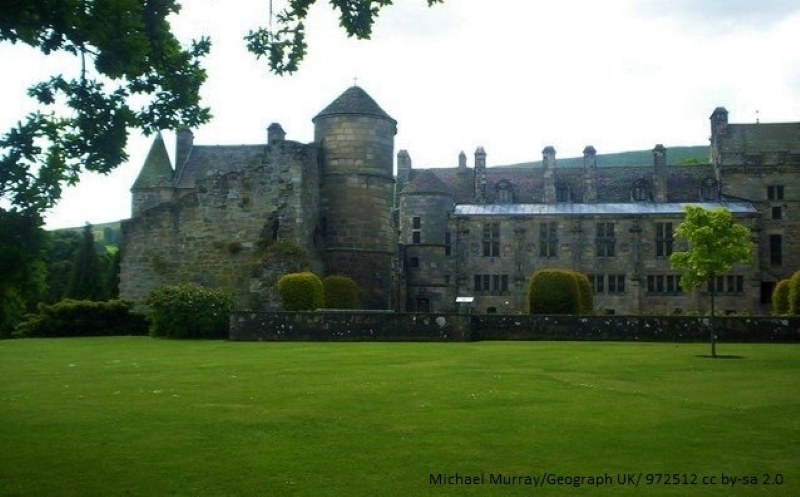

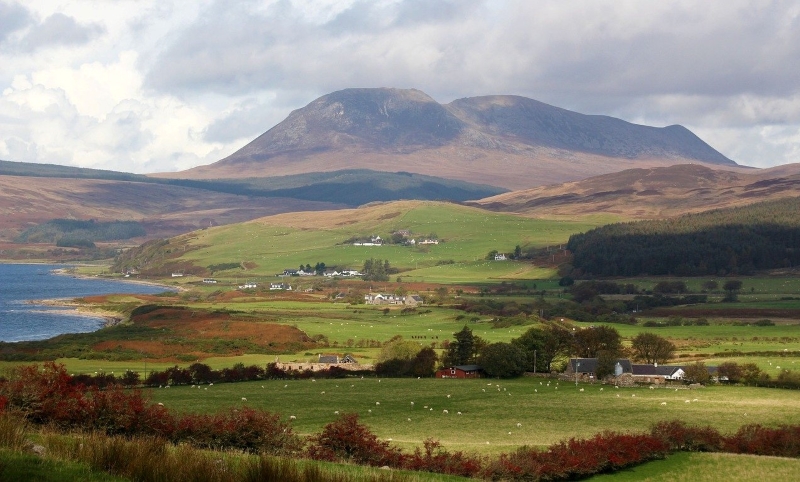 Many tourists who visit Scotland will want to spend a few days on one of the islands off the west coast. Known as the Hebrides. The most visited is probably the Isle of Skye (famous for the Cuillin mountains) since it has been connected to the mainland by a bridge since 1995 and it’s a simple matter to drive there.
Many tourists who visit Scotland will want to spend a few days on one of the islands off the west coast. Known as the Hebrides. The most visited is probably the Isle of Skye (famous for the Cuillin mountains) since it has been connected to the mainland by a bridge since 1995 and it’s a simple matter to drive there. In the Firth of Clyde between the mainland and the long, southward-stretching tongue of the Kintyre peninsula lies the Isle of Arran. Scotland’s seventh-biggest island, Arran is also one of the most accessible of the west coast islands being close to the heavily-populated central belt and just a short ferry trip from the mainland. Arran has been continuously inhabited since the early Neolithic period and numerous prehistoric remains have been found. The island once belonged to Norway but is now firmly in Scottish hands!
In the Firth of Clyde between the mainland and the long, southward-stretching tongue of the Kintyre peninsula lies the Isle of Arran. Scotland’s seventh-biggest island, Arran is also one of the most accessible of the west coast islands being close to the heavily-populated central belt and just a short ferry trip from the mainland. Arran has been continuously inhabited since the early Neolithic period and numerous prehistoric remains have been found. The island once belonged to Norway but is now firmly in Scottish hands! Arran’s main town. The crossing takes just under an hour and if you are travelling by car, advance booking is recommended. During the summer months, you can also sail from Kintyre to Lochranza in the north of the Island, a trip which takes only 30 minutes.
Arran’s main town. The crossing takes just under an hour and if you are travelling by car, advance booking is recommended. During the summer months, you can also sail from Kintyre to Lochranza in the north of the Island, a trip which takes only 30 minutes. For the less energetic outdoor enthusiasts there is a plethora of paths, trails and walks of all lengths to explore, ranging from short and easy wanders along sandy beaches to longer and slightly more challenging routes. Whichever you choose, remember to dress appropriately and tell someone where you are going – just in case!
For the less energetic outdoor enthusiasts there is a plethora of paths, trails and walks of all lengths to explore, ranging from short and easy wanders along sandy beaches to longer and slightly more challenging routes. Whichever you choose, remember to dress appropriately and tell someone where you are going – just in case!
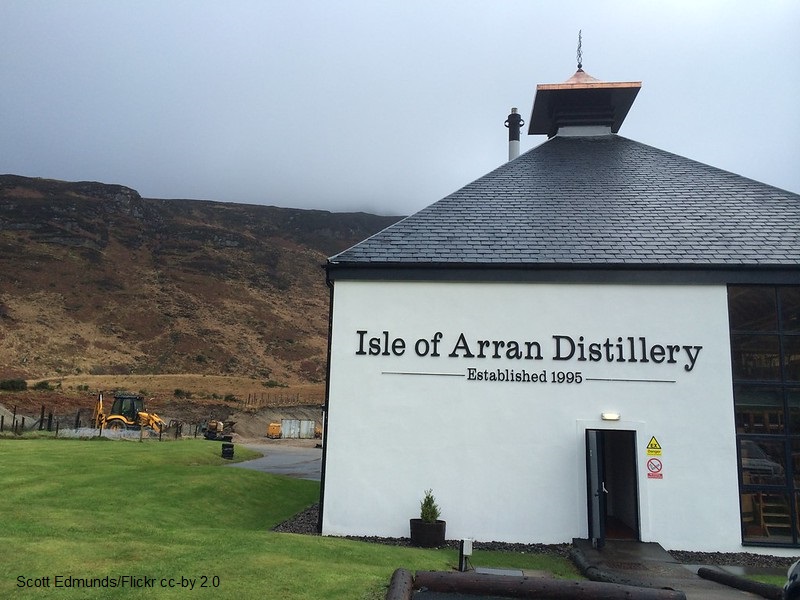
 Want to see Scotland from a different perspective? How about hiring a motor cruiser for a leisurely cruise across the country? Opened in 1822 the Caledonian Canal runs from
Want to see Scotland from a different perspective? How about hiring a motor cruiser for a leisurely cruise across the country? Opened in 1822 the Caledonian Canal runs from 
 There are 29 locks on the canal all of which are manned by a lock keeper so all you have to do to safely navigate a lock is follow their instructions. You are free to roam up and down the entire length of the canal from Banavie just outside Fort William to the Muirtown Basin Marina just outside Inverness. Chartered boats are not allowed beyond either of these limits.
There are 29 locks on the canal all of which are manned by a lock keeper so all you have to do to safely navigate a lock is follow their instructions. You are free to roam up and down the entire length of the canal from Banavie just outside Fort William to the Muirtown Basin Marina just outside Inverness. Chartered boats are not allowed beyond either of these limits.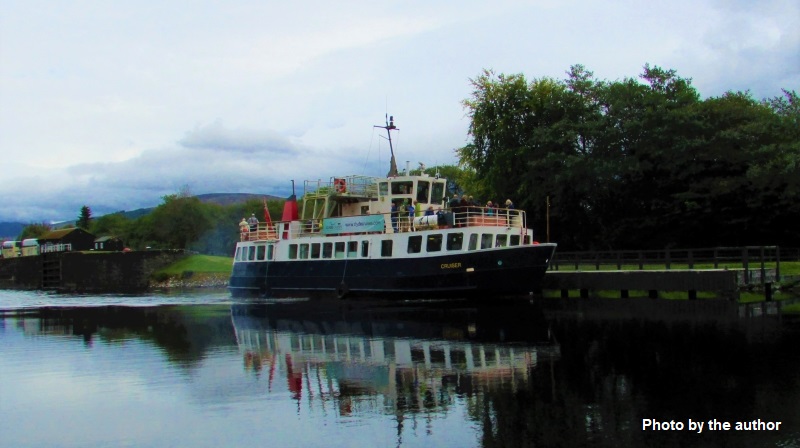 Those stretches of the canal which connect the four lochs together can be quite narrow and during the height of the season it gets quite busy. You must be prepared to meet oncoming traffic which could be anything from a cruiser the same size as yours to surprisingly big cruise boats and barges carrying dozens of passengers to small sailing yachts and even canoes. The rule when passing oncoming traffic is ‘keep to the right’ ie: when passing oncoming traffic they must be on your left. These narrow stretches of canal widen into the broad, open waters of the lochs where navigation is easy.
Those stretches of the canal which connect the four lochs together can be quite narrow and during the height of the season it gets quite busy. You must be prepared to meet oncoming traffic which could be anything from a cruiser the same size as yours to surprisingly big cruise boats and barges carrying dozens of passengers to small sailing yachts and even canoes. The rule when passing oncoming traffic is ‘keep to the right’ ie: when passing oncoming traffic they must be on your left. These narrow stretches of canal widen into the broad, open waters of the lochs where navigation is easy.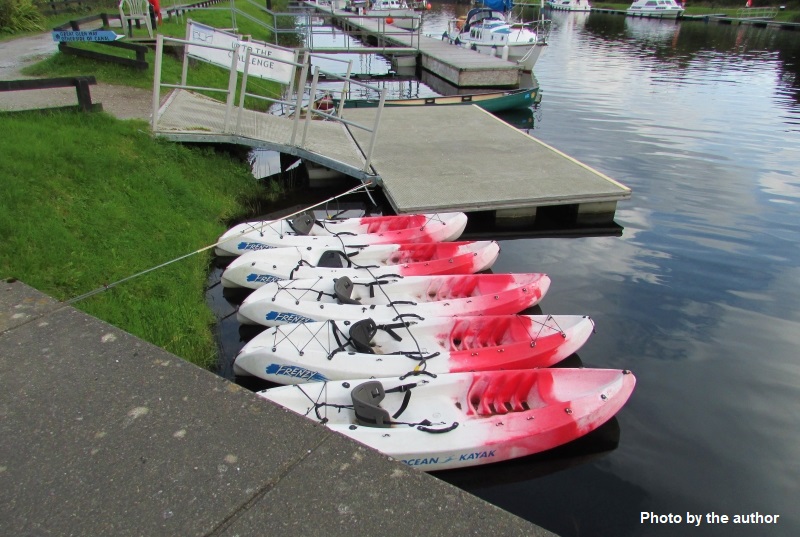
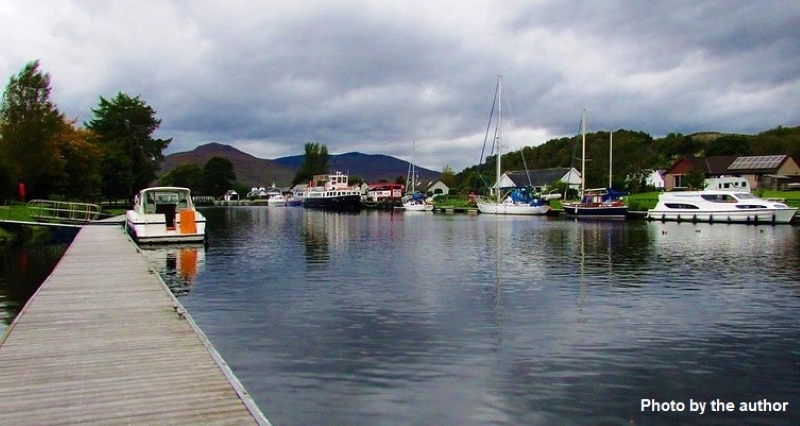 There are plenty of berthing points along the canal especially close to the locks. Not all berthing points are equipped with fueling or watering points but the larger ones are. Shore power (240v) is also available at some berthing points.
There are plenty of berthing points along the canal especially close to the locks. Not all berthing points are equipped with fueling or watering points but the larger ones are. Shore power (240v) is also available at some berthing points. From its beginning as a small fishing village, today’s bustling town of Oban is now the main departure point for ferries to the Western Isles and much of the west coast of Scotland and during the height of the tourist season its normal population of about 9000 people swells to more than 25,000 most of whom stay for only a few days before moving on.
From its beginning as a small fishing village, today’s bustling town of Oban is now the main departure point for ferries to the Western Isles and much of the west coast of Scotland and during the height of the tourist season its normal population of about 9000 people swells to more than 25,000 most of whom stay for only a few days before moving on. Prominent in the town, especially for those who arrive by sea, is a tall, red chimney with a black tip. It belongs to the Oban Distillery which is one of the very few distilleries in Scotland located in an urban setting, as it is, being just off the main road (A85) which runs along the seafront, making it one of the easiest to access and possibly the most-visited distillery in Scotland. Well worth a visit, Oban Distillery goes back to 1794 and was a major factor in the early development of the town. It is now owned by the Diageo group and has been designated a 5-Star Visitor Attraction by
Prominent in the town, especially for those who arrive by sea, is a tall, red chimney with a black tip. It belongs to the Oban Distillery which is one of the very few distilleries in Scotland located in an urban setting, as it is, being just off the main road (A85) which runs along the seafront, making it one of the easiest to access and possibly the most-visited distillery in Scotland. Well worth a visit, Oban Distillery goes back to 1794 and was a major factor in the early development of the town. It is now owned by the Diageo group and has been designated a 5-Star Visitor Attraction by  Probably the most prominent feature of the town is the Listed Monument of McCaig’s Tower, often known as McCaig’s Folly. Modelled on the Colosseum in Rome this unfinished structure stands on Battery Hill behind the town and is a favourite subject of the postcards for sale in the local shops. Intended as a family monument the tower was built by a wealthy banker, John Stuart McCaig between 1895 and 1902. His motives weren’t entirely selfish though. It was also his intent to provide work for local stonemasons. McCaig’s Tower is accessible by road (keep your eyes peeled for the signs – some of them aren’t easy to spot!) or, for the energetic, it can be reached by a hard ten-minute uphill slog from the town centre. First time visitors to the tower are in for a surprise. Inside, a grassy hillock provides a quiet public garden as a respite from the busy town and the location is a magnificent viewpoint from which to view the town of Oban and the bay and (if it isn’t too misty) further afield to the isles of Kerrera, Lismore, Mull and the peninsula of Morvern.
Probably the most prominent feature of the town is the Listed Monument of McCaig’s Tower, often known as McCaig’s Folly. Modelled on the Colosseum in Rome this unfinished structure stands on Battery Hill behind the town and is a favourite subject of the postcards for sale in the local shops. Intended as a family monument the tower was built by a wealthy banker, John Stuart McCaig between 1895 and 1902. His motives weren’t entirely selfish though. It was also his intent to provide work for local stonemasons. McCaig’s Tower is accessible by road (keep your eyes peeled for the signs – some of them aren’t easy to spot!) or, for the energetic, it can be reached by a hard ten-minute uphill slog from the town centre. First time visitors to the tower are in for a surprise. Inside, a grassy hillock provides a quiet public garden as a respite from the busy town and the location is a magnificent viewpoint from which to view the town of Oban and the bay and (if it isn’t too misty) further afield to the isles of Kerrera, Lismore, Mull and the peninsula of Morvern. Oban is also a major centre for those who enjoy sailing pleasure craft along Scotland’s west coast. Oban has a large marina but, curiously, it isn’t in Oban! It’s actually located on the island of Kerrera, the large island which shelters Oban Bay. There are several other smaller marinas in the area and transit berths are available at Oban’s North Pier. The town also retains a significant fishing fleet.
Oban is also a major centre for those who enjoy sailing pleasure craft along Scotland’s west coast. Oban has a large marina but, curiously, it isn’t in Oban! It’s actually located on the island of Kerrera, the large island which shelters Oban Bay. There are several other smaller marinas in the area and transit berths are available at Oban’s North Pier. The town also retains a significant fishing fleet. Oban can be a busy and crowded town at times but visitors are well catered for in the shape of the many hotels, restaurants, cafes and bars to be found and there is nothing nicer than finding a strategically-placed coffee shop or hotel bar from where you may sip your favourite beverage, look out over the bay and wonder to which of the many hebridean islands that ferry is going. Just thinking about it might make you want to jump onto the next one leaving the harbour!
Oban can be a busy and crowded town at times but visitors are well catered for in the shape of the many hotels, restaurants, cafes and bars to be found and there is nothing nicer than finding a strategically-placed coffee shop or hotel bar from where you may sip your favourite beverage, look out over the bay and wonder to which of the many hebridean islands that ferry is going. Just thinking about it might make you want to jump onto the next one leaving the harbour!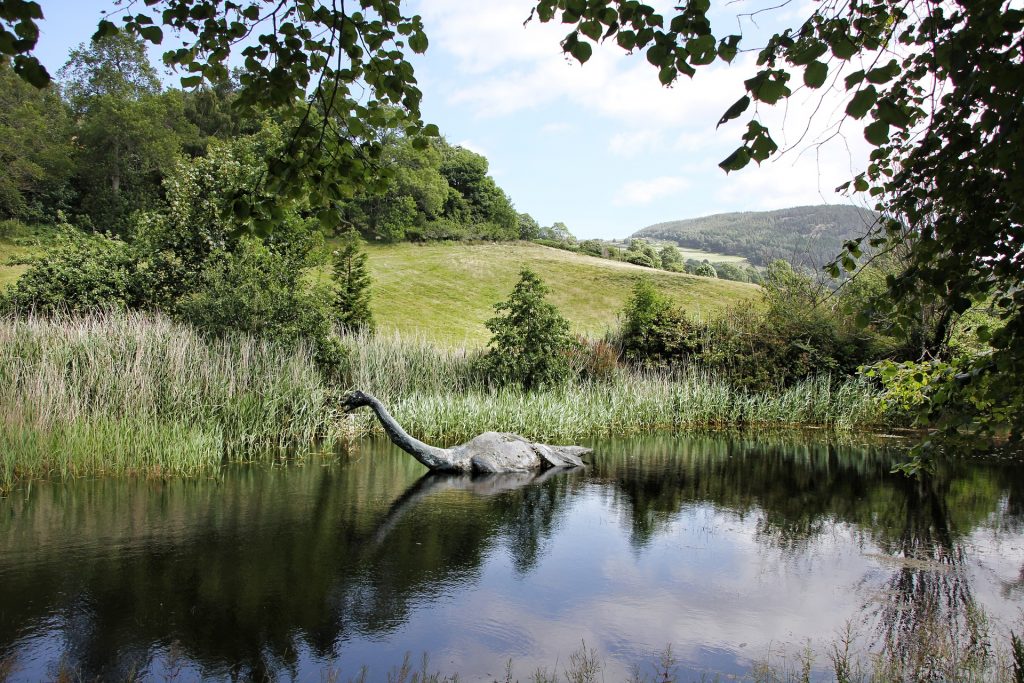 Lying within this glen is Loch Ness and on the shore of the loch about halfway along you will find the ruins of Urquhart Castle. Close to the village of Drumnadrochit and located in a prominent position surrounded on three sides by water Urquhart Castle is famous for being the place from which the Loch Ness monster has most often been seen and photographed and, perhaps for this reason, it is one of the most visited castles in Scotland but the existence or otherwise of this legendary creature isn’t the only reason for visiting Urquhart Castle.
Lying within this glen is Loch Ness and on the shore of the loch about halfway along you will find the ruins of Urquhart Castle. Close to the village of Drumnadrochit and located in a prominent position surrounded on three sides by water Urquhart Castle is famous for being the place from which the Loch Ness monster has most often been seen and photographed and, perhaps for this reason, it is one of the most visited castles in Scotland but the existence or otherwise of this legendary creature isn’t the only reason for visiting Urquhart Castle.
 Overlooking the castle and the loch and discreetly hidden by the sloping hillside below the main A82 a new, modern visitor centre was opened in 2002. Accessed from the car park by steps or elevator the visitor centre comprises three main areas: the shop, leading to the viewing terrace and the path to the castle; an exhibition area which includes a large model of the castle and an audio-visual theatre.
Overlooking the castle and the loch and discreetly hidden by the sloping hillside below the main A82 a new, modern visitor centre was opened in 2002. Accessed from the car park by steps or elevator the visitor centre comprises three main areas: the shop, leading to the viewing terrace and the path to the castle; an exhibition area which includes a large model of the castle and an audio-visual theatre.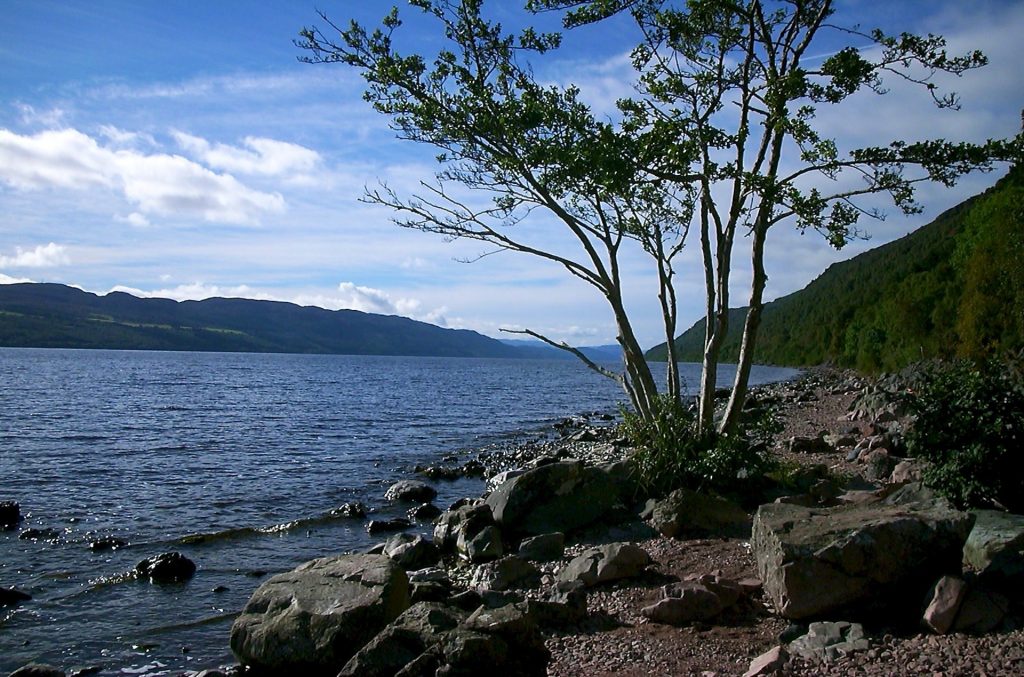 Be sure to visit the cafe for the views from the outside terrace are quite spectacular which is why it was once a popular wedding venue. Sadly, weddings are no longer conducted at the castle but happy couples are quite welcome to take photographs. Once into the castle grounds proper there is much to see including a full-sized replica trebuchet (a bit like a catapult), a fine example of a truly impressive siege weapon from a time before gunpowder.
Be sure to visit the cafe for the views from the outside terrace are quite spectacular which is why it was once a popular wedding venue. Sadly, weddings are no longer conducted at the castle but happy couples are quite welcome to take photographs. Once into the castle grounds proper there is much to see including a full-sized replica trebuchet (a bit like a catapult), a fine example of a truly impressive siege weapon from a time before gunpowder. Located at the western end of the Great Glen at the head of Loch Linnhe Fort William is often known as ‘The Outdoor Capital of Scotland’ because of its excellent position as a base for outdoor activities. With a population of about 11,000 this highland town is never quiet! Summer or winter thousands of tourists arrive in the area, many of them seeking adventure on the hills and mountains which surround the town.
Located at the western end of the Great Glen at the head of Loch Linnhe Fort William is often known as ‘The Outdoor Capital of Scotland’ because of its excellent position as a base for outdoor activities. With a population of about 11,000 this highland town is never quiet! Summer or winter thousands of tourists arrive in the area, many of them seeking adventure on the hills and mountains which surround the town. And what a collection of fine mountains there are! Ben Nevis (4413 ft/1345 m), the UK’s highest mountain, towers over the town – so close in fact that to get a decent view of it one has to travel a couple of miles outside of the town!
And what a collection of fine mountains there are! Ben Nevis (4413 ft/1345 m), the UK’s highest mountain, towers over the town – so close in fact that to get a decent view of it one has to travel a couple of miles outside of the town!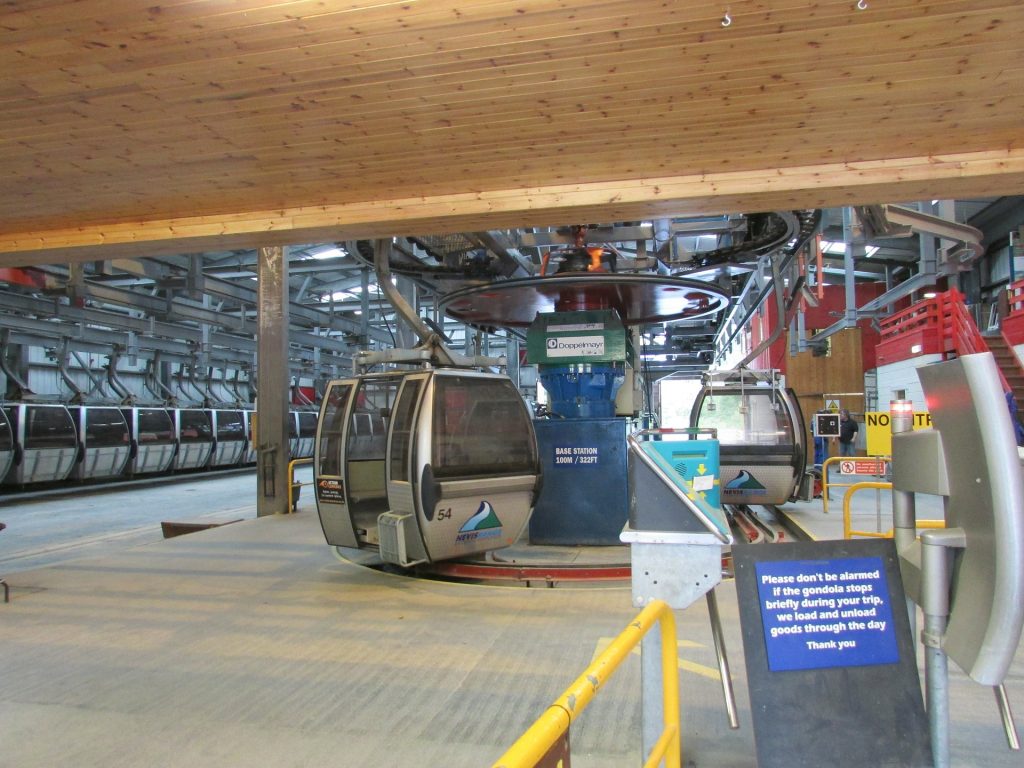
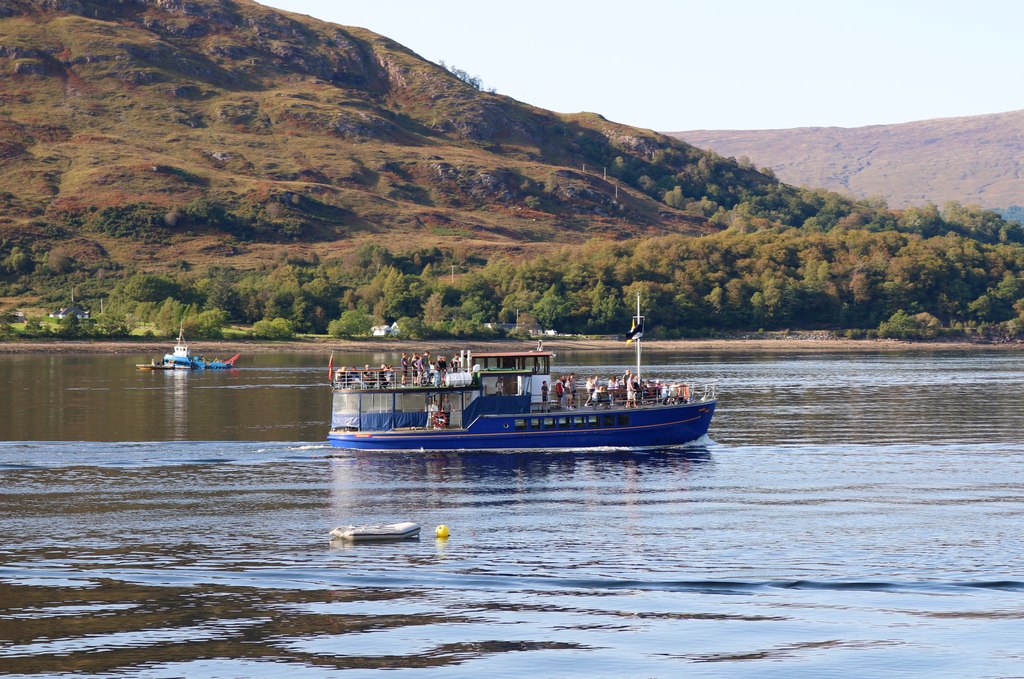 There are many adventures to be had in the great outdoors in the area from hillwalking to rock climbing, ice climbing, kayaking, wildlife spotting (on land and sea), fishing, diving, off-road driving and motorcycling, boat hire and more and all of these can be indulged in by yourself (provided you have the necessary equipment and expertise of course) or under the supervision of one of the various guided tours available in the area.
There are many adventures to be had in the great outdoors in the area from hillwalking to rock climbing, ice climbing, kayaking, wildlife spotting (on land and sea), fishing, diving, off-road driving and motorcycling, boat hire and more and all of these can be indulged in by yourself (provided you have the necessary equipment and expertise of course) or under the supervision of one of the various guided tours available in the area. For those whose interests don’t lean towards outdoor activities Fort William still has much to offer. The gaelic name for Fort William is An Gearasdan which means ‘The Fort’ and many local people still refer to it by that name today and the remains of the original fort are still worth a visit. This was built by the English in an attempt to pacify the clans during the turbulent period of the various Jacobite rebellions which culminated in the Scottish army’s defeat at Culloden in 1746. In the town’s High Street the West Highland Museum is a great place to go to find out more of the history of the town and surrounding area.
For those whose interests don’t lean towards outdoor activities Fort William still has much to offer. The gaelic name for Fort William is An Gearasdan which means ‘The Fort’ and many local people still refer to it by that name today and the remains of the original fort are still worth a visit. This was built by the English in an attempt to pacify the clans during the turbulent period of the various Jacobite rebellions which culminated in the Scottish army’s defeat at Culloden in 1746. In the town’s High Street the West Highland Museum is a great place to go to find out more of the history of the town and surrounding area.
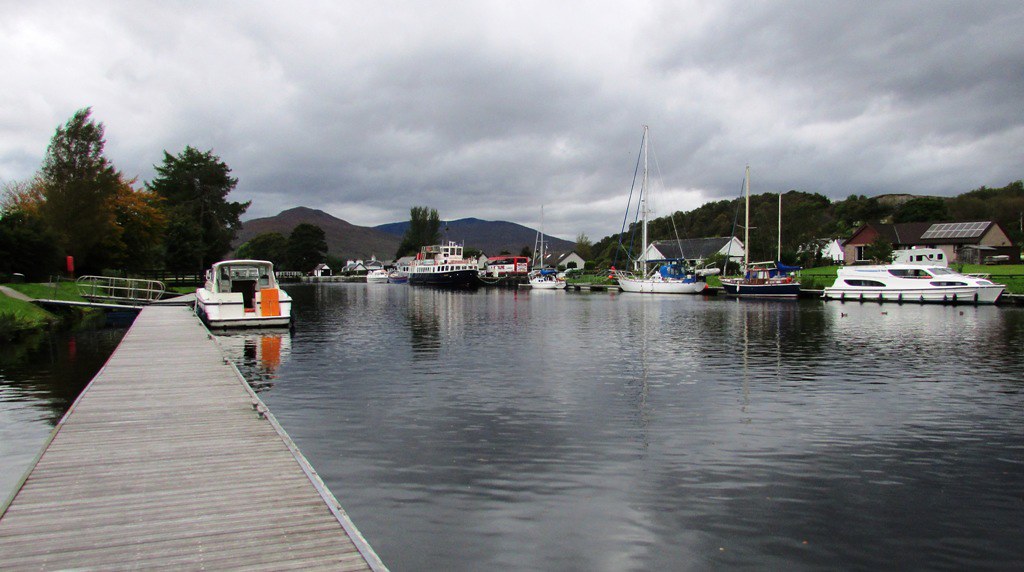 Fort William lies at the western end of the Great Glen, a huge gash in the land running between
Fort William lies at the western end of the Great Glen, a huge gash in the land running between  The surrounding area offers spectacular views of mountains, lochs and rivers as well as some fascinating history and, if you chose wisely, you will be treated to the finest Scottish cuisine available in one of the several former castles (yes, that’s right, castles) which dot the area and are now hotels. Some of them take a little trouble to find but a visit to Fort William and the surrounding area will reward you with sights and experiences (and tastes) which will live in your memory for a long time.
The surrounding area offers spectacular views of mountains, lochs and rivers as well as some fascinating history and, if you chose wisely, you will be treated to the finest Scottish cuisine available in one of the several former castles (yes, that’s right, castles) which dot the area and are now hotels. Some of them take a little trouble to find but a visit to Fort William and the surrounding area will reward you with sights and experiences (and tastes) which will live in your memory for a long time.
